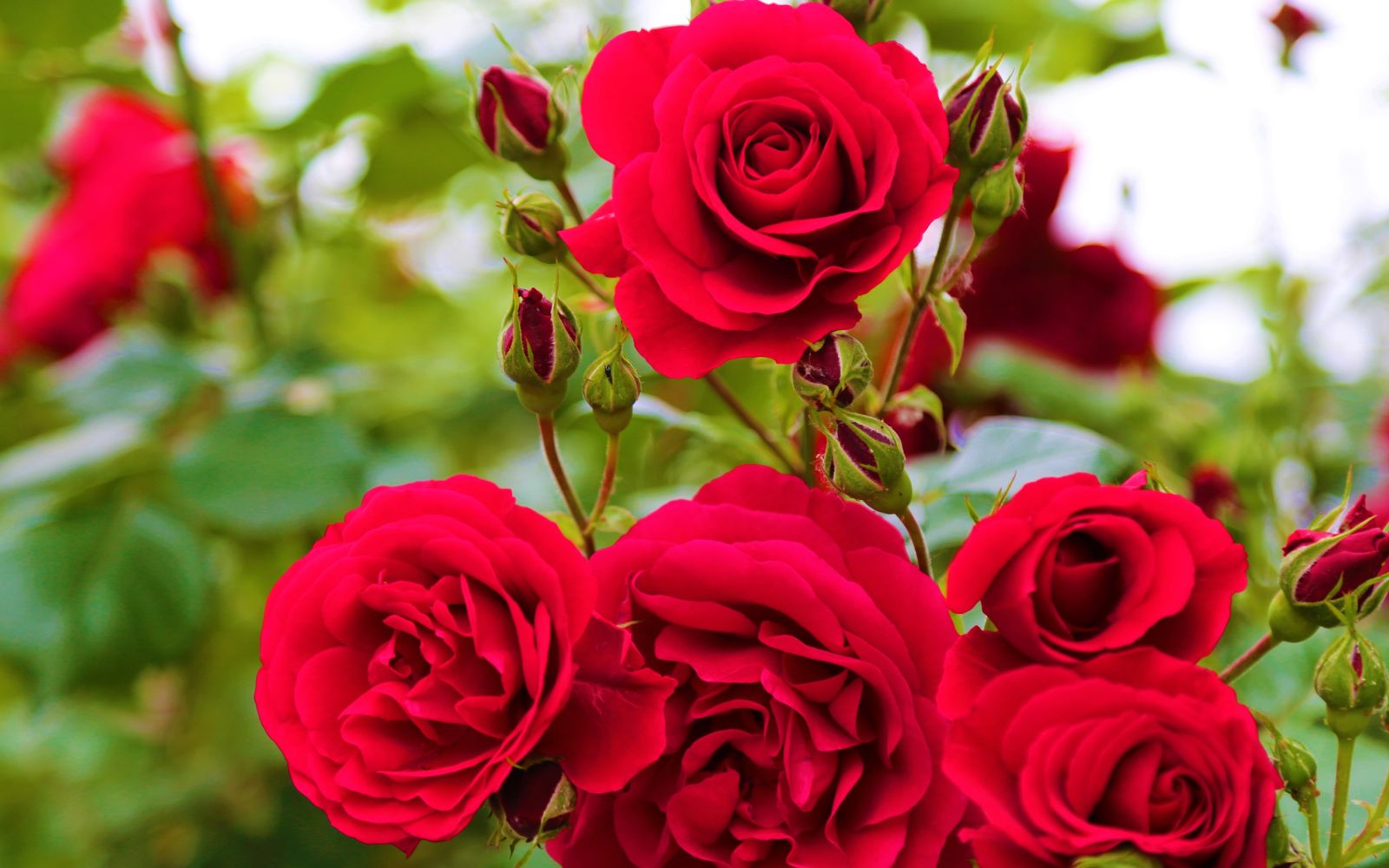Understanding Gardening Fundamentals
So, you want to get started with gardening. From Scratch.
Whether you have a small garden space or have a large acreage to grow different garden types, building a beautiful garden is challenging.
But you don’t want to start growing farms or crops. You want to create one that will make your garden look beautiful and provide you with some organically grown edible fruits and vegetables.
A garden that you can scale up knowing it’s sustainable and easy to get started. Something that’ll make you self-sufficient, something rewarding, and something you can look on in many years with admire.
You’ll be able to introduce yourself as a successful gardener, be a proud owner of a beautiful yard, and wake up in the morning with the beautiful sight of flowers and edible plants in your backyard.
This is absolutely 100% achievable and within your means.
But here’s the hard truth:
Very few gardeners enjoy that level of success.
The majority of gardeners give up after attempting to grow in a single season.
However, don’t shy away. There is good news too:
A huge factor in your success in growing a beautiful garden comes down to understanding the proper growing ways before it’s too late.
Yes, you can avoid those mistakes if you plan for it.
Ready?
Buckle up gardeners, here we go.
If we’re going to make a successful gardener out of you, we’ve got to make sure you’re starting on the right foot. This means understanding the basics and doing it the right way from the start.
So welcome to Chapter 1 of how to get started with gardening, where we’re getting stuck into Gardening 101: the stuff you can’t afford to get wrong.
By the end of this chapter, you’ll be able to fully understand the basics that will make gardening easier and groom you to be a better gardener from day one.
It’ll be like reading the Matrix Code.
You will learn how a plant grows and reproduce, improve soil, recognize healthy plants, and choose the most suitable ones for your plot.
Starting a garden means you must have the right foundations. Non-negotiable. So, let’s get you off on the right foot.
It’ll be a bumpy ride, but it’s exciting, and ultimately, it’ll be worth it.

What do plants need?
If you’ve ever scratched your head and thought to yourself, “What do these plants need”? Then this is the step in the right direction.
Here is what you need to know about plant needs.
All plants need moisture, nutrients, sunlight, and a suitable temperature for healthy growth and optimal development. However, they will require different levels of each depending on the natural habitats in which they have evolved.
Moisture
Water is crucial for the healthy growth of the plant. It’s no wonder that both humans and plants need water to survive. The plant uses water through a photosynthesis process to keep its leaves and stems firm and upright.
There are different ways for plants to absorb and store water. Most plants take up moisture through microscopic root hairs and lose it via the leaves in a process called transpiration. The water helps with sugars and nutrient circulation.
The efficiency of a plant in handling water determines its chances of survival. For example, plants from arid regions, such as cacti, have reduced leaf size and waxy coating to control moisture loss.
Growing a plant that suits your climate reduces the care needed for the plant.
Right Temperature is important for optimal plant growth

Susan Charmen
Gardening Expert
Temperature
The temperature affects the growing condition of plants. The plants are classified according to hardiness. It depends on the range of temperature variation down to that a plant can tolerate.
Plant hardiness zones provide insights about what can grow where. It considers information about different types of climatic conditions across the entire country. The hardiness zone can be divided into three categories:
- Tender plants (Tolerate temperature down to 41°F (5°C)
- Frost-hardy (Tolerate temperature down to 23°F (-5°C)
- Full-hardy (Tolerate temperature down to -4°F (-20°C)
Different types of plants need broad temperature requirements. But young plants are more vulnerable and need more care and protection from temperature swings to survive.
You should slowly introduce seedlings that have been raised indoor to the outdoor temperature. This is also known as “hardening off.”
If you have frost-sensitive plants, then it should be wrapped up or moved to a frost-free location over winter.
Here is what you need to know about temperature and plants.
Most plants grow best in roughly the same temperature and humidity that is also comfortable for humans. Whereas some plants, like it cooler or warmer climate. Knowing the hardiness zone of the plant is essential to a successful garden.
You can use the USDA Plant Hardiness Zone Map. It’s a color-coded or shaded map that tells you plants that can be grown in particular geographic areas. The map is published by the United States Department of Agriculture, which is occasionally modified and updated.
The updated map is based on the climate data gathered at National Weather Service stations throughout the U.S and other countries. You can find 11 zones marking the average lowest winter temperatures, with Zones 2-10 divided into subzones.
Sunlight
Plants need sunlight to grow in a process called photosynthesis. The plant’s green parts contain a pigment called chlorophyll. It absorbs light and converts carbon dioxide and water into sugar and starch.
The plant then uses these compounds to make cellulose, which is the building block of plant tissue. The long-grown shoots and leaves grow in the direction where they find the sunlight as efficiently as possible.
The sunlight is vital to plants. Any insufficient or restricted light causes the plant to become pale and drawn. Well-adapted plants to heat and bright light tend to have small or narrow, even needle-like leaves. Others may have various “sunscreens, such as dark masking pigments or silver-grey feltings.
Shade-adapted plants often have broad or large leaves made up of smaller leaflets that absorb as much light as possible. So, as we understand now that every plant needs at least some light to grow fully, the amount of sunlight required varies.
For example, Mushrooms (actually a fungus) can grow in a dark place such as under a shed. On the other hand, daisies and waterlilies require full sunlight. Several different plant types rest in the middle of these two extremes.
When you are buying a plant from a nursery, it comes labeled with the amount of sunlight required. Usually, full sun marking means six or more hours per day of the sun, whereas part-day means less than six hours of daylight.
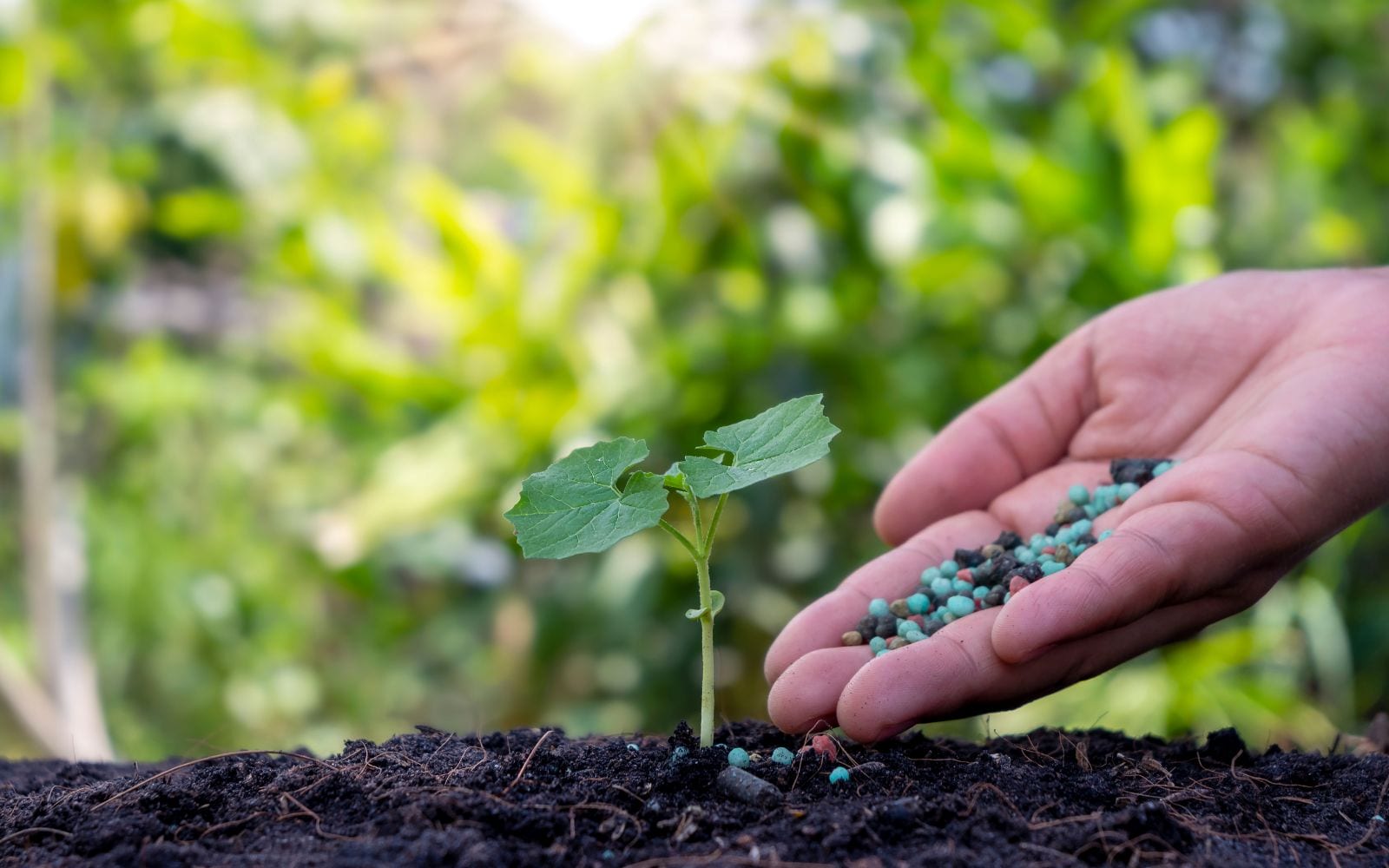
Nutrients
Nutrients or fertilizers are an essential part of gardening. As humans need a healthy diet to prosper, so do plants. A sufficient supply of nutrients keeps a plant healthy and happy.
There are three essential nutrients that a plant needs to grow healthy.
N (Nitrogen): Nitrogen helps with the growth of leaves and shoots. This is one of the most crucial nutrients for plants.
P (Phosphorous): Phosphorus promotes vigorous root growth and contributes to flower, fruit, and seed production.
K (Potassium): Potassium or potash is required for flowering and fruiting. It develops vigor in the plant and helps the plant resist disease.
When plants lack these essential nutrients, they show deficiency symptoms with distorted or stunted growth and discolored foliage. A balanced formulation helps the overall health of the plant.
When you’re buying fertilizers or plant food, the packaging mentions the nutrient level. Often these are listed numerically in order on the package (N-P-K).
For example, if the box says it number 5-10-5, it contains 5-part Nitrogen, 10 part Phosphorous, and 5-part Potassium.
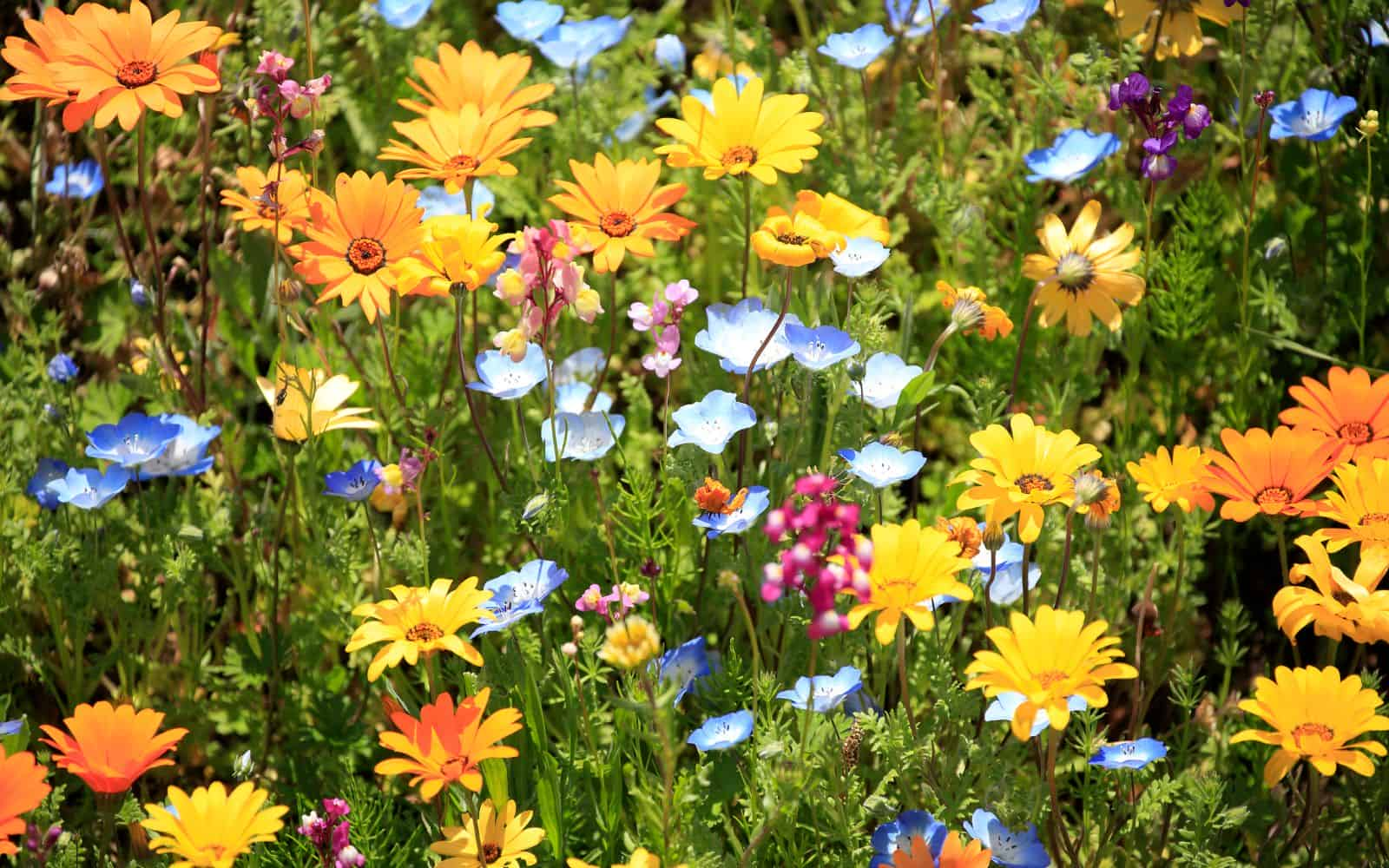
What do you need to know about plants?
Having a good understanding of plants is essential for growing a healthy garden. Before you start planting, you need to plan the types of plants you want to grow.
For example, are you planting annuals for a single season or a shrub or perennial that will become permanent?
Knowing these nuisances beforehand can help you grow the right type of garden.
Here are some considerations to make when choosing plants:
Annual Plants
Annual plants are single-season and complete their life cycle in a single growing season. It grows from seed, blooms flower, and then dies. The flowering is usually short-lived, but you can trick it to flower longer by removing fading flowers before they get a chance to set seeds.
You may find lots of choices when it comes to annual plants. The wide variety of annual allows you to find the right flower as per your needs in warm or cold weather. When you are ready to buy annuals, you can purchase either a seed packet or a nursery started.
The benefit of seed packets is that you can get an earlier start by growing it indoors and having a broader selection of seed packets. This allows you to grow unusual annuals or new and different colors of your choice.
Fertilizers that are heavy on Nitrogen concentration have a high first number. Soil quality is also vital as it helps distribute nutrition to the plant.
Organically modified soil contains secondary nutrients like calcium, magnesium, and sulfur and a trace of other nutrients called micronutrients.
These well-balanced nutrients enhance plant health and growth. Amending your soil once or twice a year ensures that you have fertile, organically rich soil that helps the plant grow. We will discuss more on how to amend soil properly later in other chapters.
Wind
Wind helps cool down the temperature of the environment. It also impacts the moisture level in the leaves. A lot of wind on a plant can strip the water out of the leaves, causing the plant to desiccate.
The cold temperature and wind lead to winter desiccation that causes the plant to die. For the plants growing in coastal environments, wind and salinity affect their growth.
If you live in coastal areas, you’re going to have some desiccation from the wind, which can inhibit growth on trees’ windward side. Having some covering from that side can reduce the desiccation.
Most seed packets can contain 100 or more seeds and are far cheaper than buying young plants.
When choosing seeds, look at the packet to make sure the seeds are fresh and have an expiration date. You can store it in a cool, dry place to reduce the chance of germination until you’re ready to sow.
You can buy nursery plants at the garden center or home store who often sell them from mid-to-late spring. These are greenhouse cultivated plants and have a head start. Check the label to understand the flower color, blooms, or appearance of the plant.
Perennial Plants
Perennial plants live on from one year to the next. The term perennial describes non-woody herbaceous plants like delphinium and geranium. These plants die in winter and reshoot in the spring.
Perennial plants have a root system that lives for three or more years. The ‘herbaceous’ term means that the plant part above the ground dies down each year. Perennials are excellent single-time investment plants. Unlike annuals, you don’t have to buy and replant every year.
Hardy perennials and tender perennials are two main types of perennials.
The hardy perennials emerge each spring, producing foliage and flower. The top part of the plant dies down in the fall, but the underground root remains healthy and waiting to revive in warm weather.
Some of the popular hardy perennials are aster, columbine, coneflower, daylily, delphinium, mums, peony, and phlox.
The tender perennials are often grown in milder climates with the USDA zone from 8 to 10. These plants start growing in spring and bloom in summer but then slow down in the fall while the root remains alive.
The cycle repeats in springtime again. You have to protect it from harsh winter as these plants can’t tolerate or survive cold temperatures.
Some examples of popular tender perennials are Angelonia, coleus, gerbera, impatiens, and pentas.
Biennial
The biennial plants set seeds before the end of their two-year life cycle. They require two growing seasons but before blooming, pinch off any buds that form in the first season to ensure a good display.
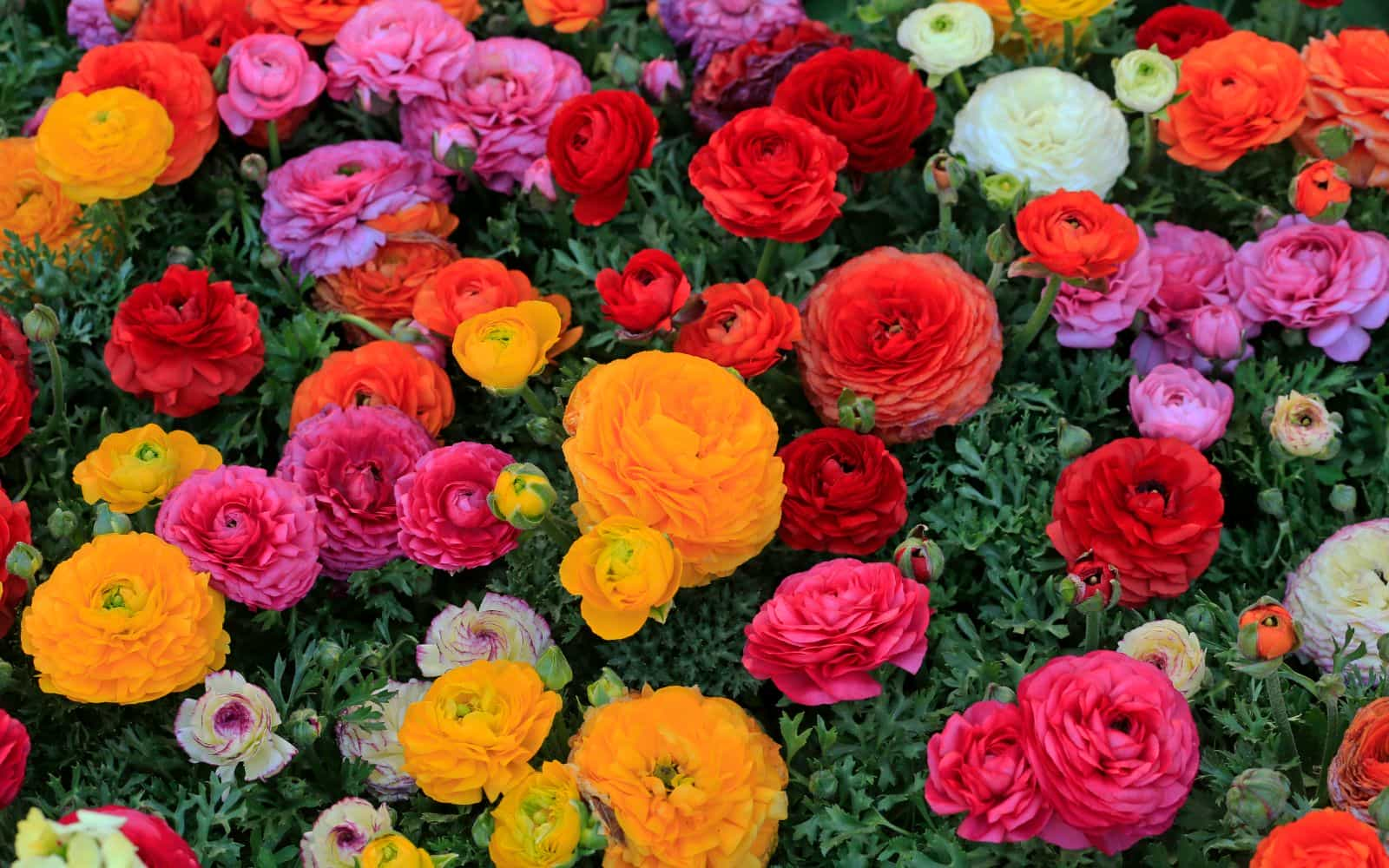
Understanding Plants Name
Whether you are a new gardener or experienced, the terminology associated with plants and gardening can seem intimidating. The Latin name system of a plant is used worldwide, and understanding it can help you get more familiar with the plant.
The botanical name is the proper name of a plant. The two-part Latin name gives clues to the plant’s geographic origins and natural habitat.
The second part of the plant’s name denotes the species and reflects the plant’s physical characteristics.
For example, the plant name Hosta Undulata contains Hosta as a genus name and Undulata as a species name. The Hosta describes the whole genus of shade-loving plants, and Undulata describes Hosta’s type with an undulating leaf shape.
How to enrich the soil, and what makes it great?
The soil is the building block of a healthy plant. The soil conditions play a considerable role in the successful growth of plants. Understanding more about soil can help you plant and increase the chance of growing a healthier garden.
So, what are the component and types of soils?
Soil is a combination of inorganic and organic components. These components include physical, chemical, and nutritional characteristics.
Sand, silt, and clay include inorganic parts of the soil. Each of these components affects the drainage and nutrition of the plant.
For example, the sandier the soil, the more drainage you have. This is great for water movement and aeration. But it also means that it’s difficult to keep water in place, so these tend to be excessively drained soils.
Another vital component of soil is the organic material that brings a lot of benefits to the plant. Organic material enhances soil moisture.
Most organic material can absorb and then release moisture slowly. It can also improve drainage and aeration, especially the coarser organic material, and provide nutrients.
How can you create healthy soil?
There is no doubt that a great garden begins with great soil. When you add components to your existing ground, it’s called amending the soil. Amendments can include lime to raise the pH of acidic soil. You can also use compost to amend the earth that supplies organic matter and micronutrients.
You are not limited to amending soil using organic matters. You may also add purchased materials such as horticultural peat, partially composted pine bark, perlite, vermiculite, sand, or calcinated clay.
However, choose these materials with care, and use only what you need to achieve a good soil structure. Suppose you’re using perlite, vermiculite, and calcinated clay. These minerals are produced by applying heat and are less susceptible than bare sand dredged from river bottoms.
Test your soil
It will be complicated to know which soil amendments will provide the required fertility level without testing your soil. The easiest way is to use DIY soil test kits.
It’s easy to use. You can mix the sample with chemicals and compare the resulting color to a chart that estimates the sample’s pH, nitrogen, phosphate, or potassium content.
Keep in mind that the home test kits are not as accurate as a professional test, but these are usually cheaper. Based on the test results, you can add specific amendments to render the soil more satisfactory for your garden.
The timing of such additions can be important as well. As such, you can add limestone to correct the pH far enough in advance of the growing season.
Minerals such as phosphate require some time to break down and can be applied in the fall to benefit plants that grow in the following spring. Also, suppose you’re amending soil using soluble nutrients such as cottonseed, bone meals, or wood ashes.
In that case, it should be added to the planting area only a week or so before. If you don’t do that, the rainfall may wash nutrients out of the soil before the plants are up and growing.
But you don’t always have to go and buy the soil tester. Here are two DIY soil testing techniques you can implement.
Settling test: In a settling test, you need to grab a soil sample in a tightly capped war and add water to it. Use enough water so that the soil is in a suspended form but not so much that you can’t shake it well.
Shake the jar and let it sit for a while. You will find that the mixture of soil and water in the jar separates after a while. The part of sand, silt, and clay settle to the jar’s bottom, and the organic matter remains floating at the top. In this way, you can determine the relative amount of organic matter and soil type.
Finger test: This is an effortless and straightforward way to determine the soil texture. You take a small sample of soil and add water to moisten it slightly.
Put the wet ground in your hand and squeeze it to make a ball. You can then feel the soil texture with your finger and differentiate between gritty sand, sticky clay, or floury silt.
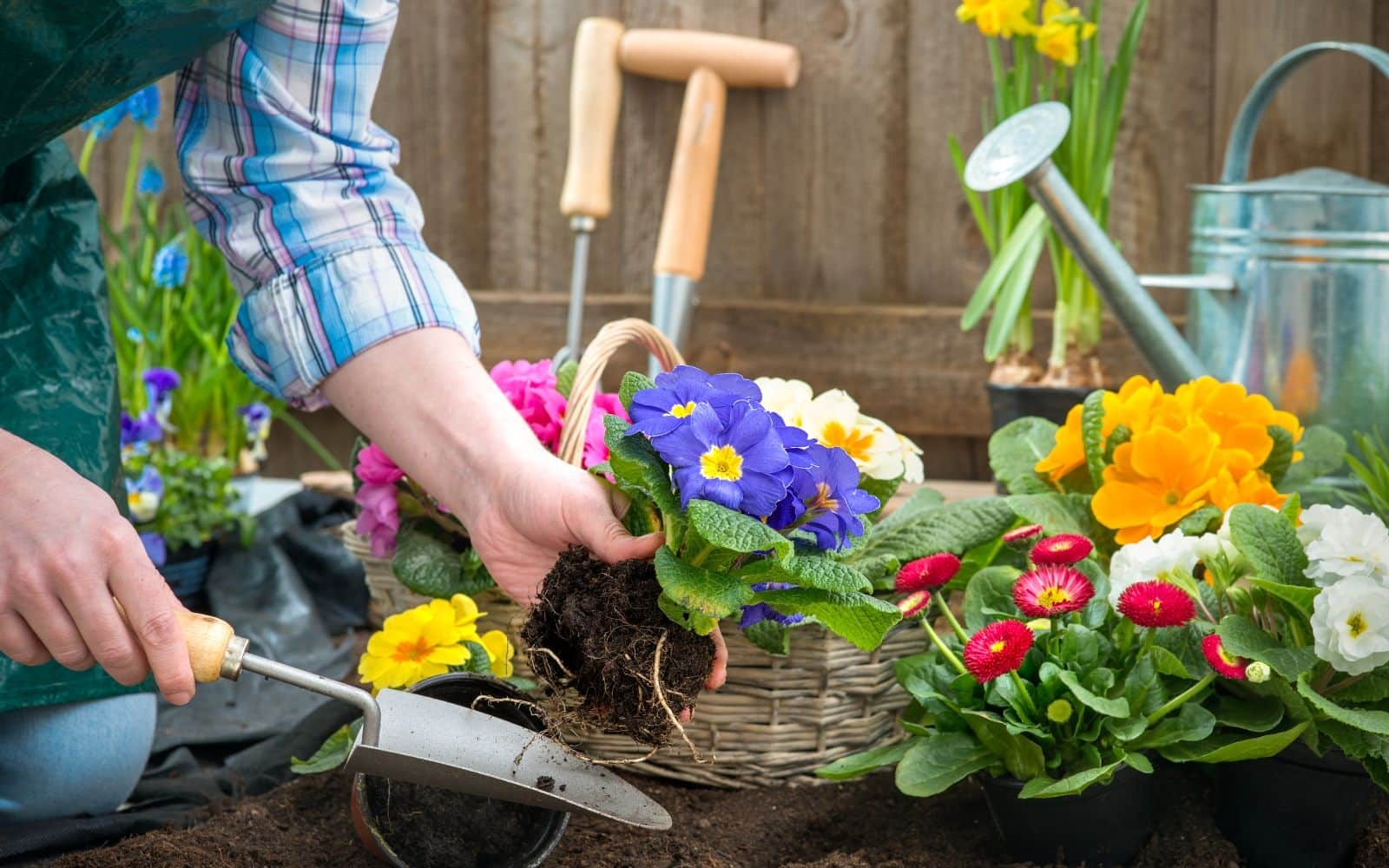
Here is how you can identify the soil types based on its texture:
Sand:
The sandy soil doesn’t hold water or moisture well, making it lose and gritty. When you squeeze sandy soil in your hand, it may form a ball but quickly fall apart when touched.
Sandy loam:
Like sand, these have a gritty texture, but soil and clay particles make them more cohesive. When you squeeze sandy loam soil, it forms a fragile ball that you can gently handle before it crumbles.
Loam soil:
Loams contain equal amounts of sand, silt, and clay and are stickier than sandy loams. You can form a moist loam soil a ball that you can handle comfortably.
Silty loam:
As the name suggests, the silty loam contains high silt content and little clay.
Silt:
The silty soil, when moistened, feels silky and forms smooth balls that you can handle carefully. But it does not contain clay that makes it more fragile.
Clay loam:
Clay loam contains higher slippery clay content and is sticky when wet.
Clay:
Clay contains the fine soil texture and form clods when dry and hard but durable when moist.
So, in the end, what good soil looks like?
Good soil can contain a combination of clay, sand, and silt with a bit of organic matter. The porous soil spaces are critical for retaining water and oxygen in the ground.
Doing a soil test to determine texture and pH can provide additional insight into the nutrient level, organic matter content, and possible contamination.
How to choose healthy plants?
Plants have different characteristics and behave differently, so it’s vital to have a basic understanding of how they look and perform before creating a planting design for your garden.
Moreover, the type of plant you choose, and their growing location significantly impact the time you need to care for them.
For low-maintenance gardens, choose more robust hardy plants that self-sustain year after another without requiring much maintenance.
Here are some common plant types that you can plant in your garden.
Trees
Trees are large size plants that produce a canopy of leafy stems above a single clear trunk. Trees often provide shade in sunny areas. You have to plan them carefully. As once planted, they are difficult to move.
Shrubs
Shrubs are an integral part of garden design. It can be evergreen or deciduous and come in several different shapes and sizes. You can grow shrubs for their attractive foliage, flower, and stems. Shrubs provide you with colorful flowers all year round.
Grass and Bamboo
Grass and bamboos are easy to grow and form stem and leaf bases with straplike foliage. You can plant it along with annuals and perennials to provide it cover from elements.
You can plant sedges that are quite similar to grasses, and some are evergreen. At the same time, the bamboos are sturdy grasses with woody stems.
Bulbs
The bulb plants are ornamental plants that contain food storage parts to sustain their growth. It includes plants such as daffodils, corms, and tubers. You can plant it for its colorful flowers and decorative foliage.
Annuals and Biennial Plants
You can grow annual and biennial plants for flowers, but these die within a year or two. These produce stems and leaves in their first year, then bloom and die in the second year. The hardy plants are great to plant around borders, whereas use pots to grow the tender plants.
Climbers
Climber plants raise on host plants or structures in search of nutrients and sunlight. It includes different evergreen and deciduous plants. Some climbers have a soft stem, while others can be woody.
You need to set up trellis or wires or provide a host tree or shrub for the climber to climb.
Water Plants
The water plants are great for ponds and landscaping that live in and around the water. Oxygenators water plants help keep the water clear by starving out the weed.
Aquatics such as water lilies have a root at the bottom of plants. They typically grow in the moist soil surrounding the natural pond.
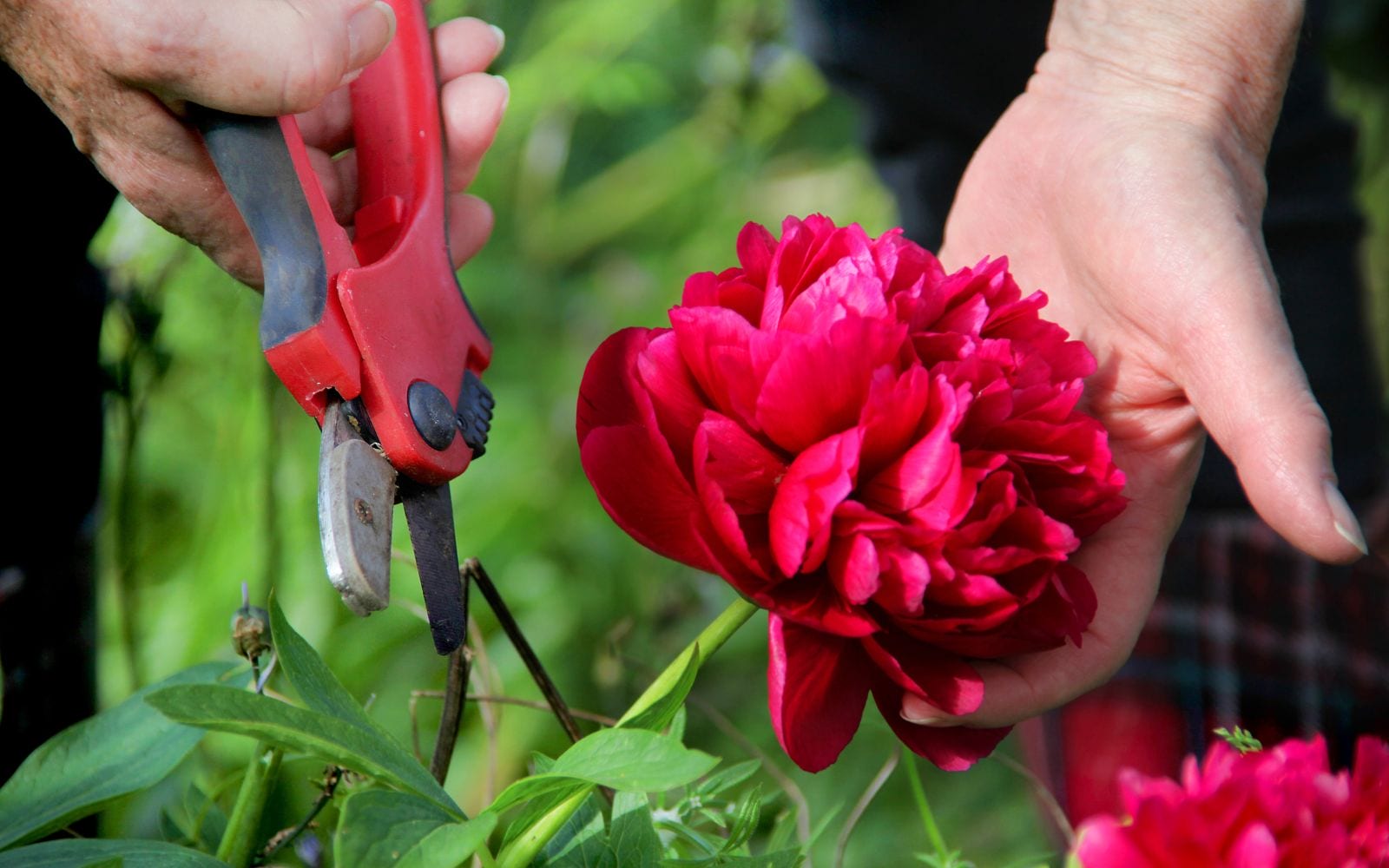
What are the basic gardening tools you need?
You need gardening tools to maintain it properly. These tools are highly versatile and can be used for more than one purpose. You don’t need to buy expensive gardening tools to get started.
Here are some of the beginner gardening tools you need.
Caring for soil
Properly caring for your soil is a critical task in the garden and plays a vital part in keeping plants healthy. You can use a fork or spade for digging and have a single set of each.
Forks are suitable for working on heavy or stony soils. Spades are better for digging holes and general earth moving. On a smaller scale, you can use a hand trowel and fork that are indispensable for light digging, planting, and loosening the soil.
Controlling weeds
Controlling weeds is essential for a healthy garden, and it can be most easily done using a long-handled hoe that cuts weeds from the base.
This tool is ideal for more extensive gardening beds, as you can quickly weed between plants. You can also use it to make seed drills with a hoe.
Raking
You can use a garden rake to level and till the soil surface to get it ready for seed sowing and clear light plant debris.
Plant care
Plants need water, and you can use a watering can to irrigate your plants. You can use a hose to water around the borders, but basic watering can be sufficient for new plants, containers, and baskets.
Pruning Tools
Use the right pruning tools to size and shape your garden plants. You can use pruners for light woody stems. It’s worth investing in a good-quality pair.
If your garden has large trees or shrubs, consider buying long-handled loppers and a pruning saw. You can use shears when cutting back leafy growth and trimming lawn edges.
You can use a mower to maintain your yard. There are so many different options when it comes to buying a mower.
For a small to medium size yard, choose a manual push mower. You can also use a spring-tine rake to remove debris and collect fallen leaves.
So what’s next.
Everything in this chapter is foundational.
Perhaps it may seem a little boring. But trust us when we say that this is 100% vital to your garden.
When your garden does not turn out to be as expected, it’s because you have not got the fundamentals right. This causes the garden to remain barren or not to give expected results.
Don’t be that person. If you ever feel even slightly bogged down or struck, return to this chapter and re-read it again.
You will forget this.
So, bookmark it, save it, download it.
What Next?
Beginners Guide to Starting A Fruit Garden
This chapter has been very fundamental, but the next chapter is a whole different story.
We’re going to show you:
- Exactly what fruit plants we recommend
- How you can get started growing your juicy fruits from your backyard
- The perfect way to solve your gardening problem and grow fruit with enhanced health benefits
By the end of chapter 2, you’ll know what kind of fruit garden to start.
No more murky theory. It’ll be crystal clear. Promise.

